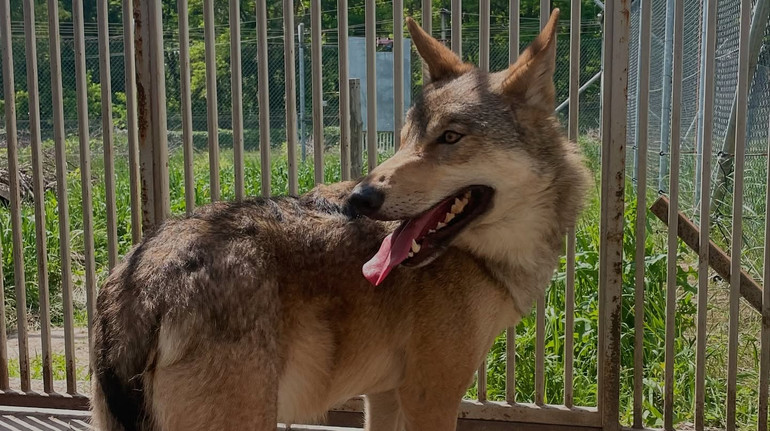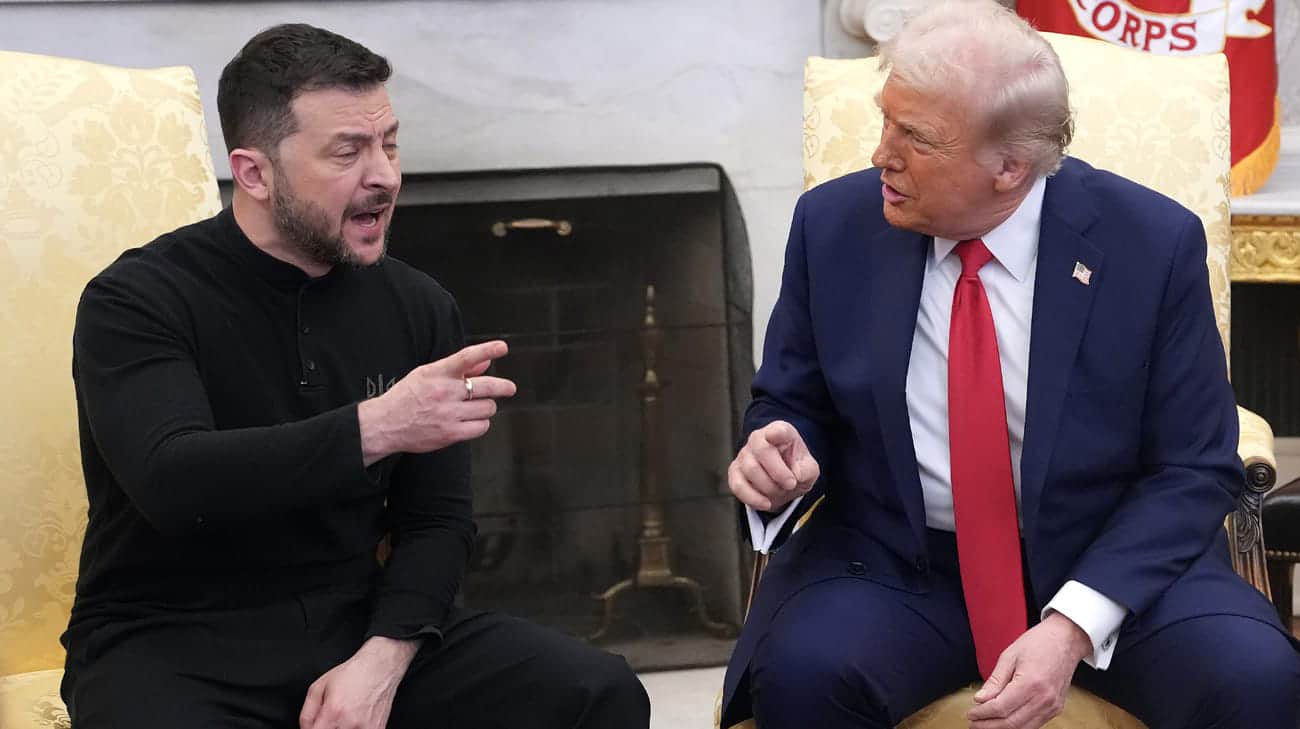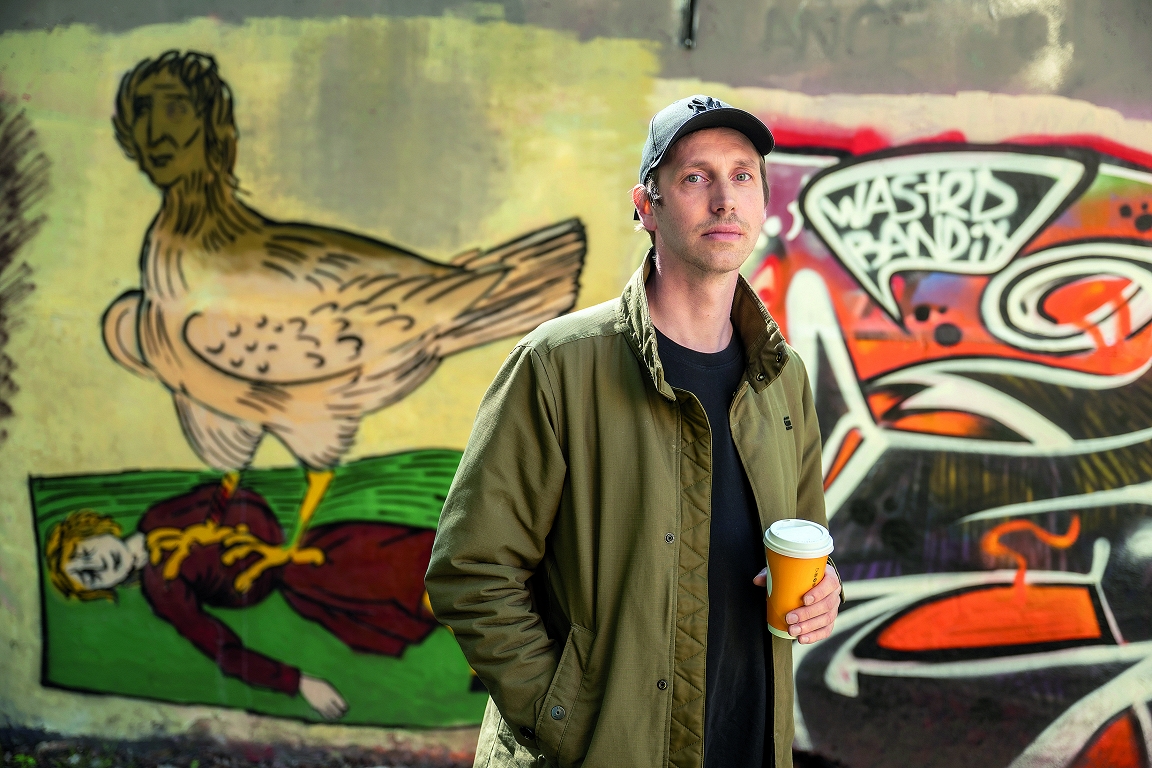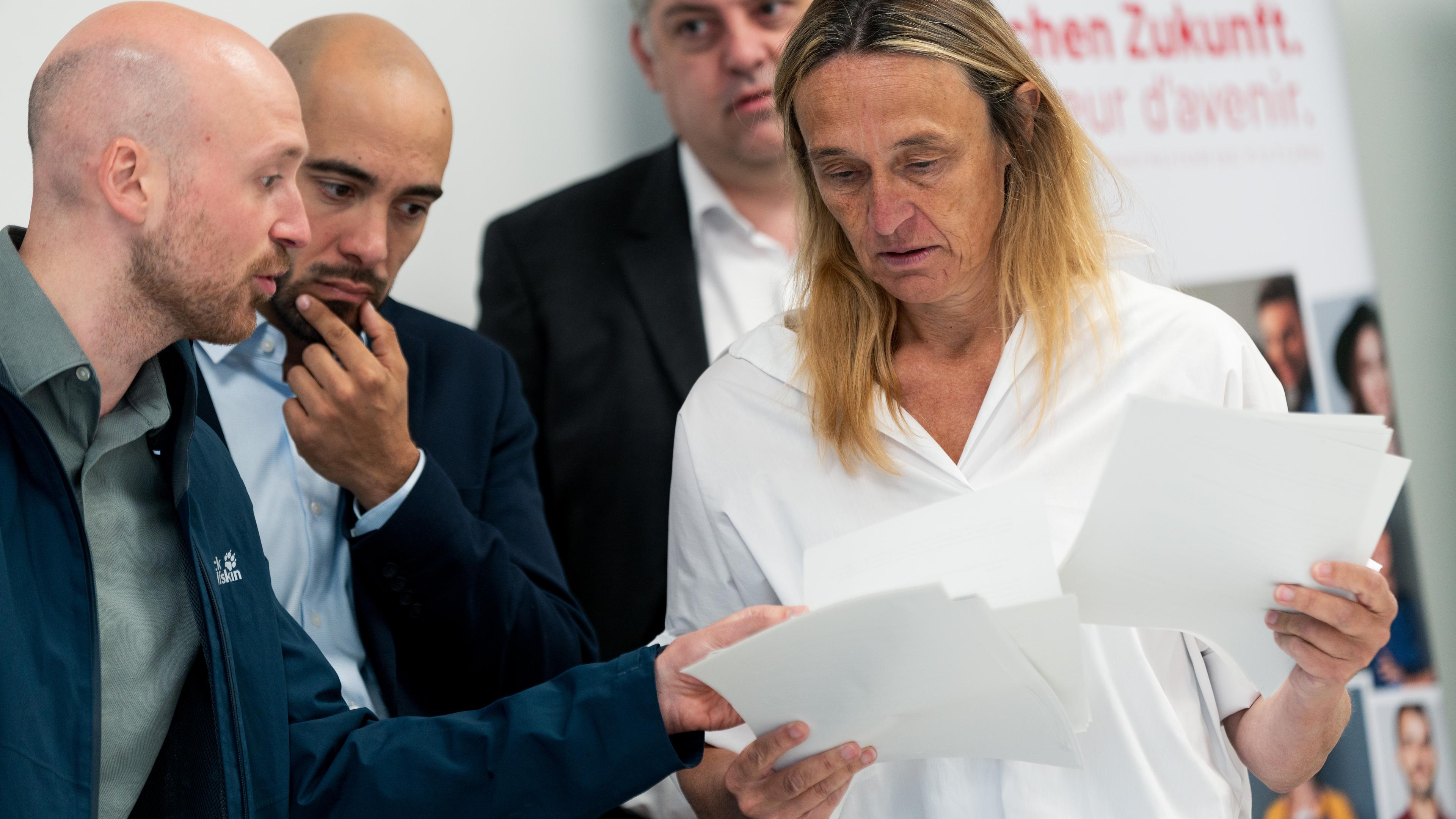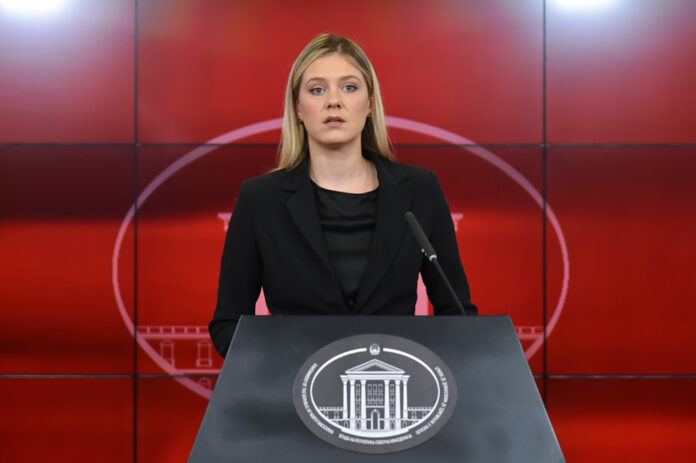A feminist exhibition was opened in Kryvyi Rih. What she tells about
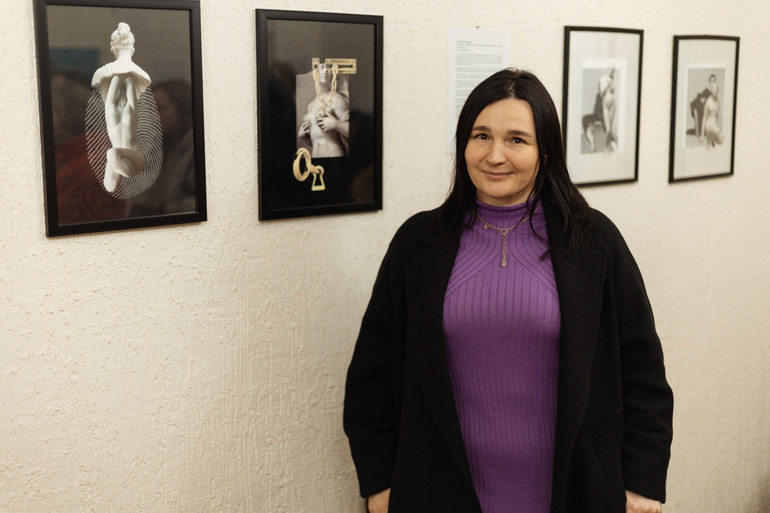
The large industrial city of Kryvyi Rih, which is constantly suffering from Russian shelling, does not lose its cultural life. One of his core here is Kryvyi Rih Center of Modern Culture (KRCC). However, the core is mobile – has no separate room, so it moves in different locations to cover the activity of all 126 kilometers, which stretched the city.
The center emerged shortly before the full -scale invasion. But the Great War did not stop his work. KRCC does not propose to turn away from the eerie reality, but, on the contrary, deeply comprehends it and those problems that the war has only intensified.
Yes, KRCC now exhibits the feminist exhibition « Visual Voices of Women » in the premises of Goncharenko Center Kryvyi Rih. It reveals the issue of multidimensionality of female identity, which appears at the intersection of gender, social status, ethnicity, place of residence or profession. Crossing, these dimensions interact and shape every woman’s unique experience. Whether a woman is free in her daily elections is one of the main issues of the project.
The exhibition has works from both Kryvyi Rih and artists who are known far beyond their small homeland. It Kateryna Bondarets, Ksenia Gnylytska, Xuanh sisters, Nastya Eh, Oksana Jarun, Ksenia Kostyanets, Maria Kulikovskaya, Vlad Ralko, Anastasia Tymoshenko, Marina Chaika. Their « visual voices » sound in the usual way for every way: collage, video, photography, painting, installation.
Collage
In this artistic technique their works presented their works Catherine Bondarets and Ksenia Kostyanets. Thanks to the black background, which both have taken as a basis for their work, there is a theatrical effect of the « black cabinet », which enhances the meaning of each embedded symbol.
Catherine Bondarets, collages
Photo: Anna Balvas
« Correction », « Imprint », « Gold Castles », diptychs « Plagiarism » and « Walls treat » – the names of Catherine Bondarets. The author uses ready -made integral images, in particular, ancient sculptures, and mechanisms of the modern world: a printing machine, an overhead chain for doors, a fingerprint of a finger … Thanks to such a combination, at first glance, non -combined elements from different epochs, there is an artistic fuel, which is forced to stop.
Four works in the technique of analog collage form a series of « voices » of Ksenia Kostyanets. Lesya Ukrainka, Olga Kobylyanska, Victoria Amelina and Xenia herself will sound at this exhibition: « Let’s compete for a new life! », « I will live, I will do », « Today is not you, » I miss the state of safety « . The works of Xenia Kostyanets are a kind of puzzles. Each letter or even parts of the words of each phrase is a separate holistic article that illustrates, reveals and enhances the deep content of the thoughts of arts that belong to these expressions.

Ksenia Kostyanets, a series « voices », « Victoria. Today is not you, rake », analog collage
Video
In video work Xenia of Gnylitskaya « Ksenia Kyivska » voice can not only be seen, but also heard. Its monologue, filmed in a blogger format, is a video address to the Ukrainian people as a presidential candidate. The artist ironically deconstructs political rhetoric, transferring it to the space of artistic expression. Due to the aesthetics of the election appeal, it raises the question of the subjectivity of a woman in society, the role of power and the possibilities of change. In the context of the exhibition, « Visual Voices of Women », this video becomes a manifesto for a woman as an agent of social transformations is not an object of political manipulation, but a voice that forms public discourse. Video work created with participation Alina Yakubenko, Stas Volyazlovsky, Yuri Efanov.
The woman in hope is an ancient art archetype, which fascinates with her mystery, causes curiosity, admiration for the process of developing a new life, visible and at the same time hidden from the eyes. This image is central in video work Maria Kulikovskaya « Saga » (director Darius Bilyakmusic Alexei Shmurak).
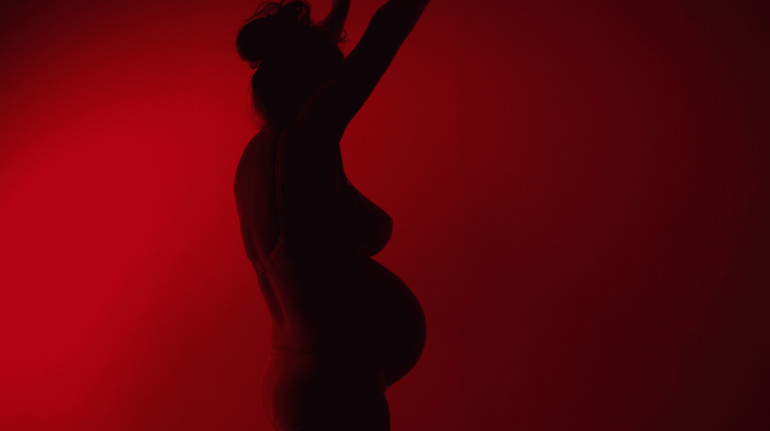
Maria Kulikovskaya, « Saga », video, director Darius Bilyak
Viewers and viewers listen to a story without words, which consists of four sections. In the first, we allegedly fall into the Renaissance, where one of the most famous paintings by the Italian artist Titian – « Venus Urbinsk » comes to life. The second section shows a silent cry, which is visualized with the help of bead flowers that « sprout » straight from the mouth. In the third part, we eavesdroat a non -free dialogue between a pregnant woman and a man, their non -verbal communication with a future baby. The « saga » ends with a solo dance of life from a woman in hope. The video becomes an intimate manifestation of hope, confusion and awareness of one’s vulnerability at a time when personal is inextricably woven into a nationwide history.
Photo
Wear a mask to be yourself. Let’s say a photo in a swimsuit in memory of a vacation if you are a teacher. And why the mask? That no one is condemned.
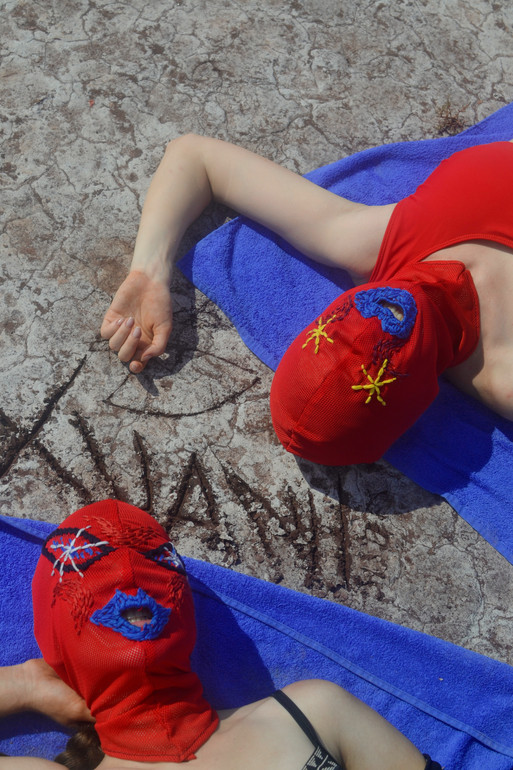
Xuanh sisters, the « Atputa » series, photography
Photography from the « Atputa » series from Xuanh sisters (Marina Dovganich and Oksana Nikolaev) Returns us to Kryvyi Rih. Its mutilated landscapes become the only possible resort landscape for a woman who has gained seeming equality in this city. It has the right to rest, to the resort and to glamour, however, among the heaps, residues of production and color from the demand of reservoirs.
In Facekini, reminiscent of protective masks, it is distinguished from the influence of the environment – both physically and symbolically. Is it a game and at the same time a bitter reality: does a woman have a choice, or her recreation space and existence is determined by circumstances? The main means of artistic expression – costume, photography and performance.
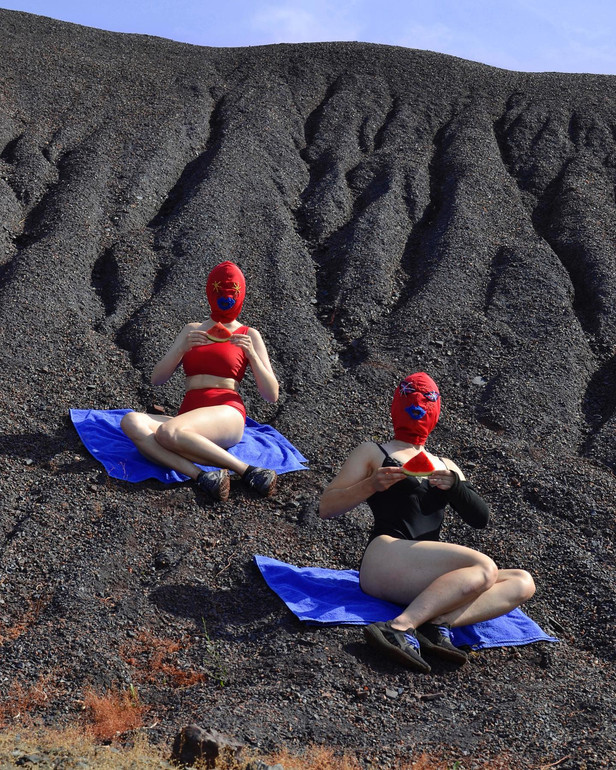
Xuanh sisters, the « Atputa » series, photography
Painting
Oil and canvas are also able to speak, tell stories, keep sounds through the era. Painting on the exhibition will present Nastya Eh, Oksana Jun, Anastasia Tymoshenko.
In their two work « anger » (from the series « 7 sins ») and « everyone has his own way » artist Nastya eh It reveals the two sides of a woman’s choice: struggle and inner path. « Anger » is an explosion of emotions that goes beyond social expectations. A woman in battle, a woman who yells, a woman who does not accept a role defined for her. Not only does it break the established images, it also challenges a system that has long depreciated her voice.
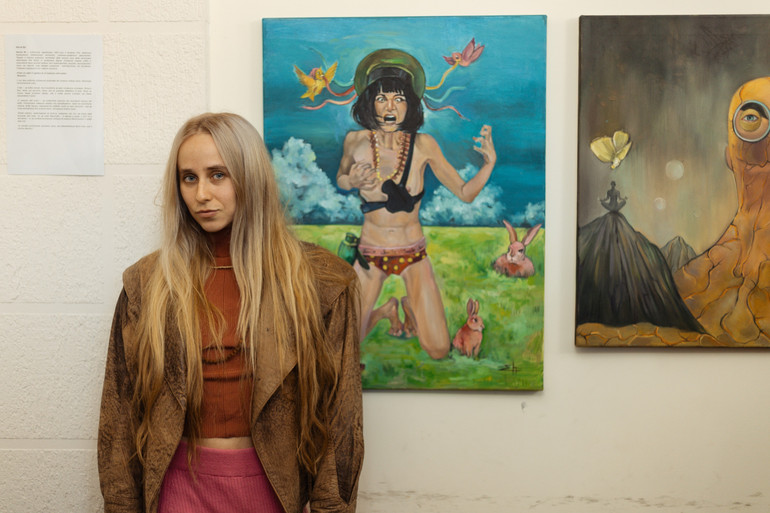
Nastya eh and her diptych « anger » (from the series « 7 sins ») and « everyone has their way », painting
Photo: Anna Balvas
« Everyone has their own path » is a symbolic canvas about internal searches and choices. And its cracking surface is reminiscent of the tests through which a person passes. Choosing a road, the desire for freedom, going beyond the usual – all this becomes a metaphor for a modern woman who decides her own destiny.
Both works presented as a diptych say that the woman defines her path. Whether it is a path of struggle – whether with a weapon in your hands or in activism – it is a deep internal journey to its own identity, its choice has power.
The body as a symbol of fertility, sacrifice and intersection of traditional ideas about female role. At the same time, it is sacred and earthly, living and inanimate, as the history of women’s experience. About this painting Oksana Jarun « Nursing ». The work is done in a gray color scheme, reminiscent of the color of the earth, which is a breadwinner of humanity.
Breasts – as a place of nutrition, care, but also objectification. Transparent ornaments applied in red are an attempt to rethink, a visual dialogue between the classic and modern view of women’s physicality. Who is the breadwinner today – the object of worship or imposed on the social role?
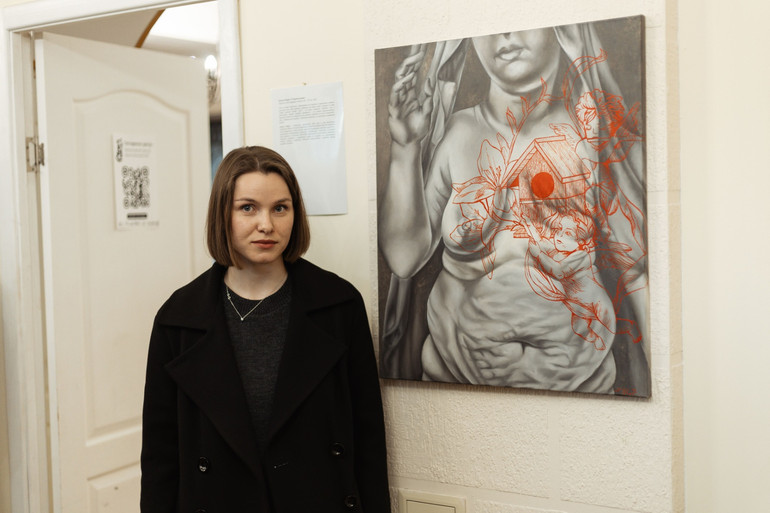
Oksana jarun and her « nurser »
Photo: Anna Balvas
The large -scale picture of Anastasia Tymoshenko « The Girl -Girl » occupies almost the entire wall. The color scheme is reminiscent of the Michelangelo fresco « Creating Adam », but in fact conveys the female image. It goes beyond reality and imposed roles, dissolving in space between fantasy and reality. Where does the social construction of femininity end and freedom begins? Is there a place for self -determination in society, which constantly forms new restrictions?
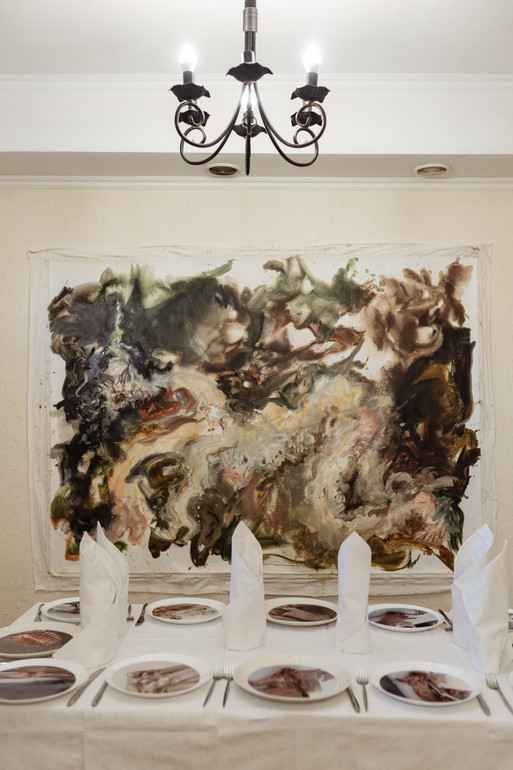
Anastasia Tymoshenko’s painting « The Union Girl » (canvas, oil, enamel) and Ralko’s power installation « Sunday lunch »
Installation
White tablecloth, beautiful white plates, cutlery, proper serving – it seems that everything is ready for celebration. But this table is not for the buffet, but for critical understanding. Artist Ralko power In his work, Sunday Lunch exposes the hidden cruelty that underlies consumption, transforming a household ritual into a critical reflection field. Instead of food on plates – photos of fragments of bloody bodies, devices of dismemberment, traces of violence.
The central image of the installation echoes with the idea of a common meal as a sacred act. Sunday lunch with twelve places at the table sends to a secret dinner – the moment of unity that preceded betrayal, victim and suffering. Like the apostles who sat next to Christ, we witness the consequences of a ritual, which is at the same time blessing and doom.
The artist raises the issues of physicality, sacrifice, traditional hierarchies and limits of our sensitivity. Are we ready to see the complete picture of what we perceive as the norm? This installation causes the viewer to face violence from which society usually turns away. In the image of a common feast, a deeper reflection of the body is hidden – not only as an object of consumption, but also as a space of struggle, suffering and memory.

Ralko power, « Sunday lunch », installation
« Tired of shaving » – naturalistic work that encourages dialogue, because in response you can hear the same phrase – « I too ». For his installation of the artist Marina Chaika Used razor, body hair, adhesive tape and canvas. This work draws attention to social control over the female body. Does the female body meet external standards to be accepted? Why becomes a radical gesture and care of a social duty?
Shaving is one of the imposed standards that shapes the idea of a « proper » feminine look. In society, there is a taboo topic of hair on the female body, even in the advertising of wars for waxing. It is part of a broader problem of silence and rejection of natural processes: menstruation, cellulite, changes in the body. This installation is an act of resistance and question: can a woman be without the need to justify her naturalness?
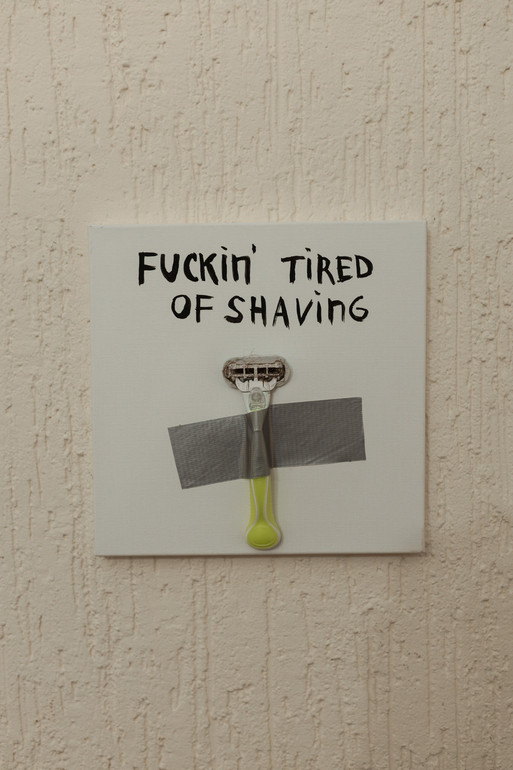
Marina Chaika, « tired of shaving », installation


